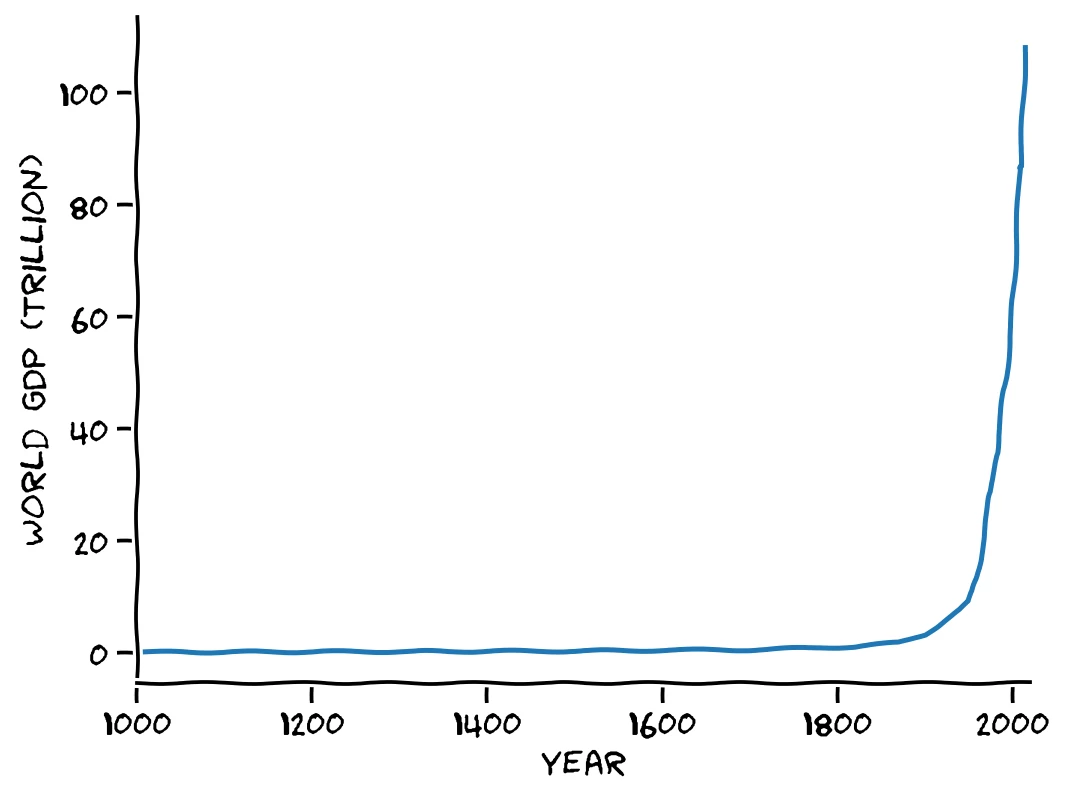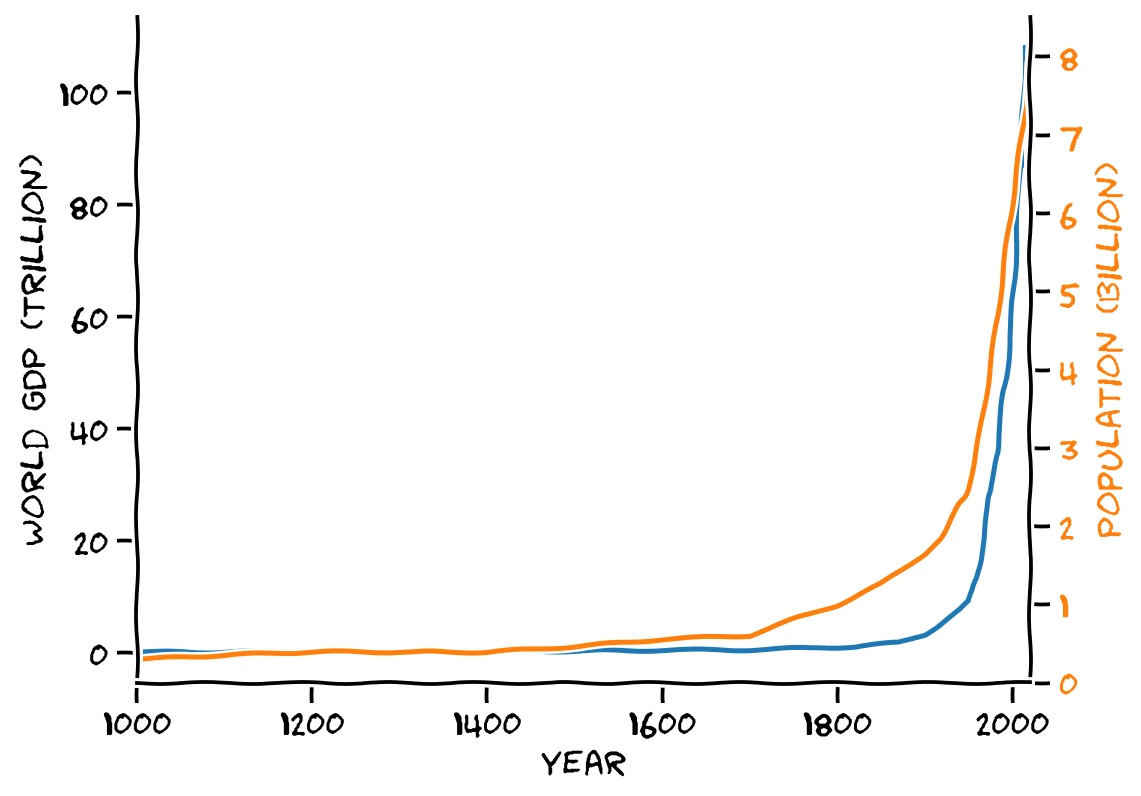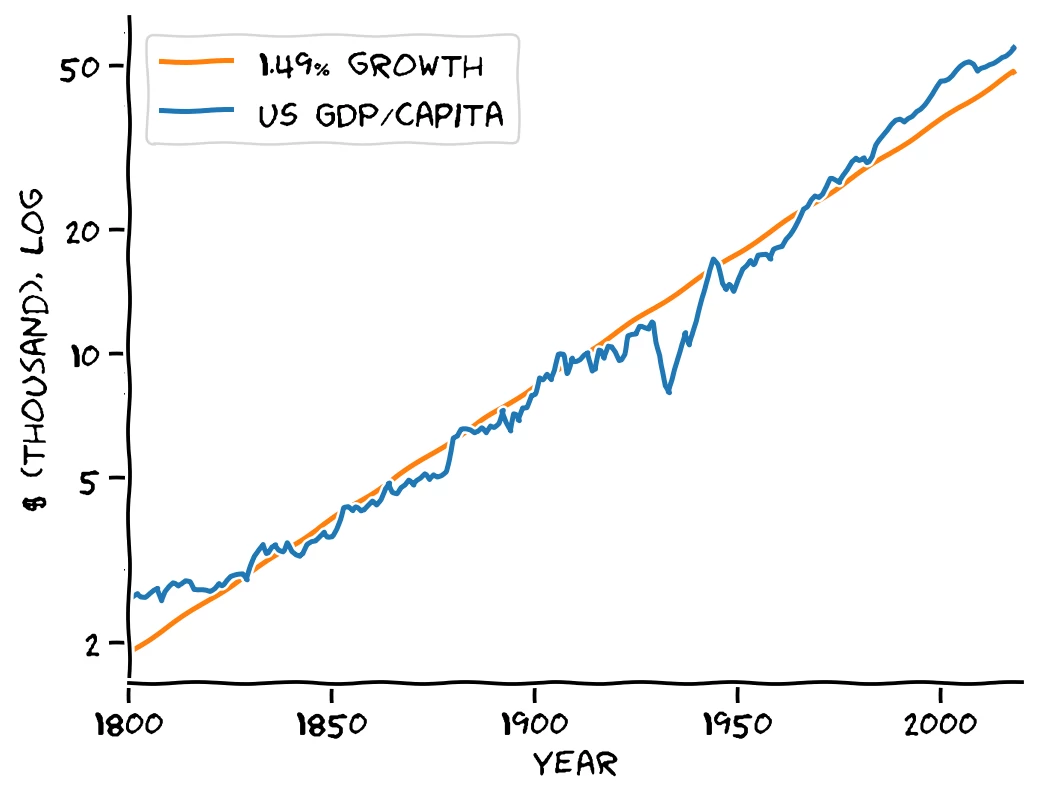I've been enjoying [cached]A Map that Reflects the Territory, a collection of the best LessWrong essays from 2018. While in general the essays are thought provoking and interesting, one set of essays gave me pause: [cached]Hyperbolic Growth and related chapters on fast vs slow takeoff.
The discussion repeats tropes that are common in the rationalist and futurist community, describing how economic and technological [cached]growth have been accelerating and suggesting that they will soon increase so quickly that we will be unable to follow:
However, we have to be careful not to mix up technological growth with an [cached]exponential increase in world population:
Controlling for this is especially important because world [cached]population growth has already slowed down substantially, with world population potentially peaking before the end of the century.
To avoid this confounding effect, we can instead use GDP per capita:
Here it becomes clear that growth has been remarkably consistent for the last two centuries, averaging close to 1.5% per year. This is certainly impressive, leading to huge increases in prosperity across the world.
However, no acceleration in growth is discernible; if anything the open question is the opposite: Will we be able to sustain this constant rate of growth, and for how long? Recent findings indicate that exponential growth in research effort and number of researchers has been necessary to maintain the same level of scientific output - just about possible while world population was also growing exponentially, but this is no longer the case.
 (
( (
( (
(